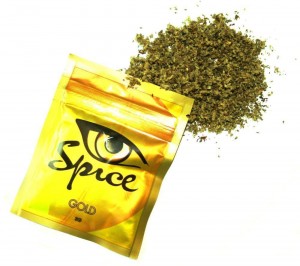Overdoses Possible on Synthetic Marijuana
 Several states have reported upticks in overdoses from synthetic marijuana over the past few years. Synthetic marijuana, sometimes called “spice” and sold under descriptors such as “botanical incense,” consists of man-made chemicals that are sprayed on plant matter and smoked, or sold as liquids to be consumed via e-cigarettes. Monitoring the Future, an ongoing survey of teen drug use in the US, reported in 2016 that 3.5% of high school seniors had used synthetic marijuana in the past year. The risks of the drug are not yet well known, since the chemicals used may vary from batch to batch.
Several states have reported upticks in overdoses from synthetic marijuana over the past few years. Synthetic marijuana, sometimes called “spice” and sold under descriptors such as “botanical incense,” consists of man-made chemicals that are sprayed on plant matter and smoked, or sold as liquids to be consumed via e-cigarettes. Monitoring the Future, an ongoing survey of teen drug use in the US, reported in 2016 that 3.5% of high school seniors had used synthetic marijuana in the past year. The risks of the drug are not yet well known, since the chemicals used may vary from batch to batch.
A case series published in the Western Journal of Emergency Medicine in 2016 described 11 cases of patients who received emergency room treatment for an overdose of the synthetic cannabinoid MAB-CHMINACA. According to the Drug Enforcement Agency, MAB-CHMINACA can cause severe toxicity, seizures, excited delirium, cardiotoxicity and death.
Kenneth D. Katz and colleagues reported that all 11 patients required sedation, while nine required intubation to provide respiratory support. Three of the 11 patients had seizures, and one suffered from hyperthermia (increased body temperature). One patient died as a result of decreased oxygen to the brain and rhabdomyolysis, a condition in which muscles break down and release toxins, shutting down the kidneys. Many of the 11 were children or adolescents.
Katz and colleageus stress that synthetic cannabinoid use is a public health crisis, and that emergency rooms should be prepared to provide aggressive sedation and respiratory support to people overdosing on MAB-CHMINACA.
Editor’s Note: ‘Spice’ is not only more potent than marijuana but also lacks the cannabinoids that are responsible for the beneficial effects of marijuana.
Lithium Improves Medical Outcomes
Lithium is one of the most effective medications for bipolar disorder, but it has other benefits as well. At a 2015 scientific meeting, Ronald Fieve reported that among 1021 psychiatric outpatients, 570 who received long-term lithium treatment for their psychiatric illnesses had a significantly lower likelihood of certain medical conditions compared to the other outpatients who did not receive lithium therapy. The medical conditions that lithium made less likely were seizures, amyotrophic lateral sclerosis (ALS) or Lou Gehrig’s disease, dementia, and heart attack.
It is not yet know how lithium decreases these medical conditions. It may be by increasing the length of telomeres. Telomeres are repeated DNA sequences that sit at the end of chromosomes and protect them during cell replication. Telomeres get shorter with aging and with stressors or psychiatric illnesses. Lithium directly increases the enzyme telomerase, which maintains telomere length. This may be one reason lithium use provides some protection from seizures, heart attacks, and other conditions.
Therapeutic Potential of Neurosteroids
 Neurosteroids have shown promise in the treatment of anxiety and depression.
Neurosteroids have shown promise in the treatment of anxiety and depression.
Allopregnanolone, a natural metabolite of the gondal steroid progesterone, is a neurosteroid that acts as a positive modulator of synaptic and extrasynaptic GABA-A receptors and exerts effects without the development of tolerance.
Researcher Mike Rogawski at the University of California, Davis developed an intravenous formulation of allopregnanolone that is being studied as a treatment for traumatic brain injury. The formulation was provided on an emergency use basis to stop treatment-resistant status epilepticus (non-stop seizures) in patients in intensive care who had been unresponsive to all medications and were placed in a barbiturate coma. When barbiturates were stopped, their seizures returned. All four intensive care patients who were treated with allopregnanolone had their status epilepticus cease and were able to go home. This included a 23-year-old who had been hospitalized with refractory status epilepticus for over 90 days.


